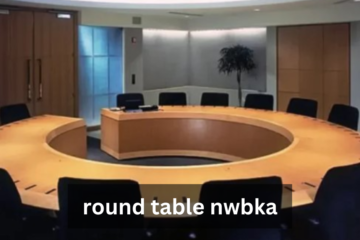As consumers find themselves swamped with ads, the challenge for brands to emerge distinctly from the sea of noise is more pressing than ever. Enter the short film as a marketing strategy—a medium that, when executed well, can captivate audiences, evoke emotions, and create lasting brand impressions. This article delves into the art and science behind using short films in marketing, drawing lessons from brands that have excelled in this domain.
The Rise of Short Film Marketing
A Shift in Consumer Preferences
Today’s consumers crave authenticity and storytelling that resonates on a personal level. Short films offer a unique opportunity for brands to connect with their audience beyond traditional sales pitches.
Why Short Films?
- Emotional Engagement: They stir emotions, making the brand memorable.
- Narrative Freedom: Allows brands to explore creative narratives that might not fit in traditional ads.
- Shareability: High-quality, engaging content is more likely to be shared, increasing organic reach.
Crafting a Compelling Short Film
● Start with a Strong Script
The backbone of any film, short or otherwise, is its script. It should be engaging, relatable, and, most importantly, aligned with the brand’s values. Crafting a script that resonates with your target audience while staying true to your message is critical to a successful short film.
● Importance of Visual Storytelling
Visuals can convey complex emotions and narratives succinctly and powerfully. The choice of color, lighting, and composition all reinforce the story’s message. Attention to visual detail can transform a simple story into a mesmerizing visual experience that captivates the audience.
● The Role of Sound
Sound design and music are not just embellishments but pivotal elements that can make or break the viewer’s emotional engagement with the film. A well-composed score and thoughtful sound design can elevate the narrative, enhancing the emotional impact and immersion of the film.
● Dynamic Editing
Editing is where the story truly comes together. A dynamic editing style can pace the film correctly, ensuring the narrative flows smoothly and retains the viewer’s attention. The edit should serve the story, using cuts, transitions, and effects to emphasize key moments and emotions.
● Casting and Performance
The cast brings the script to life. Even in short films, compelling performances can profoundly affect the audience, making the story more believable and emotionally resonant. Selecting the right actors and directing them to convey the film’s message authentically is crucial.
● Incorporate Feedback Loops
Before finalizing the short film, incorporate feedback from test screenings with audiences similar to your target demographic. This can provide valuable insights into how your film is perceived and allow you to make adjustments to maximize its impact.
Leveraging Technology in Short Film Production
1. Video Editing Software
Choosing the right video editor is crucial for transforming raw footage into a compelling narrative. Modern editing software provides advanced features like color correction, special effects, and seamless transitions. These tools enable filmmakers to enhance visual storytelling and engage viewers more effectively. The narrative’s pace and rhythm can be finely tuned, ensuring the story unfolds in a way that maximizes emotional impact.
2. AI Avatar Generator
AI avatar generators offer an innovative way to create unique, animated characters for short films. These tools utilize artificial intelligence to craft characters based on specified traits, enabling brands to present fresh, engaging narratives. AI-generated avatars can lead to new storytelling possibilities, allowing for exploring themes or concepts that might be challenging to convey with live actors or traditional animation techniques.
3. Motion Capture Technology
Motion capture technology records the movement of objects or people. In film production, it’s used to animate digital character models so that they perform like their real-life counterparts. This technology can bring unprecedented realism to animated characters in short films, making emotional expressions and body language more authentic and relatable. It’s particularly useful in fantasy or science fiction genres, where believable character movement enhances the immersive experience.
4. Drone Cinematography
Drones have revolutionized aerial photography and videography, offering a new perspective for storytelling. They allow filmmakers to capture sweeping landscapes, dramatic establishing shots, and action sequences from previously tricky or expensive angles. Drone footage can add production value to short films, making them visually striking and enhancing the storytelling with unique viewpoints.
5. Audio to Text Converter
An audio-to-text tool lets you convert spoken words into written text, which is invaluable for adding subtitles to your film. This not only makes your content accessible to a broader audience, including those who are hearing impaired, but it also caters to viewers who prefer watching videos with the sound off, particularly in public spaces or on social media platforms. Subtitles can also help in dialogue-heavy sequences or films with technical jargon, ensuring the message is conveyed clearly to all viewers.
6. Virtual Reality (VR) and Augmented Reality (AR)
VR and AR technologies are pushing the boundaries of immersive storytelling. By creating interactive environments, filmmakers can engage viewers more personally and impactfully, placing them inside the story. This can be particularly effective for educational content, documentaries, or brand experiences, where being ‘part of the story’ significantly enhances the message’s impact.
Lessons from Successful Brands
- BMW’s “The Hire” Series: A pioneer in short film marketing, BMW produced a series of short films that blurred the lines between entertainment and advertisement. The series showcased their cars and told engaging stories that captured the audience’s imagination.
- Chipotle’s “Back to the Start”: This animated short film emphasized sustainable farming, aligning with Chipotle’s brand values. Its emotional narrative and distinctive animation style garnered widespread attention.
- Airbnb’s “Wall and Chain”: A heartwarming story based on actual events that highlighted the brand’s core message of belonging anywhere. The film effectively communicates Airbnb’s commitment to bringing people together.
Key Takeaways for Marketers
- Know Your Audience: Tailor your content to resonate with your target demographic’s preferences and values.
- Focus on Storytelling: Prioritize narrative over direct selling. A well-told story will naturally lead to audience engagement with the brand.
- Leverage Social Media: Use platforms like YouTube, Instagram, and Twitter to share your short film and encourage sharing.
- Measure Impact: Utilize analytics to measure the film’s performance and impact on brand perception and engagement.
Conclusion
Short films represent a powerful tool in the modern marketer’s arsenal, offering a unique blend of storytelling, emotional engagement, and brand promotion. By drawing lessons from successful brands and leveraging the latest technological tools, marketers can create short films that entertain and deepen the audience’s connection with their brand. As we look to the future, the intersection of creativity, technology, and strategic marketing in short film production promises to open new horizons for brand storytelling.



